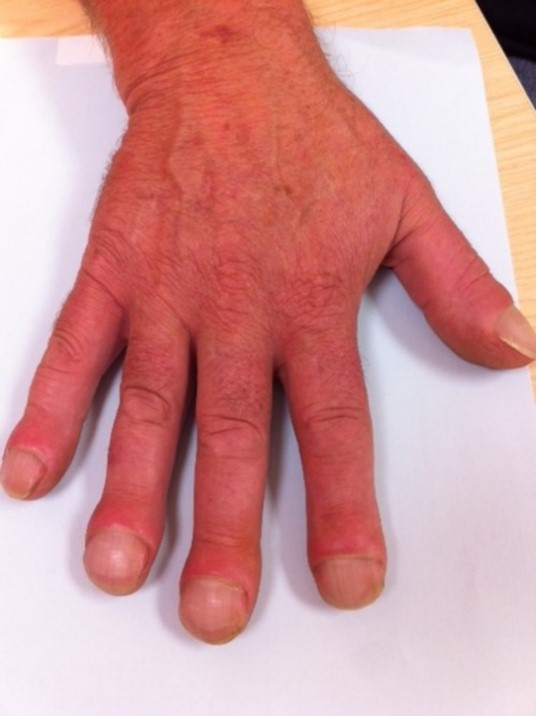The different types of pulmonary fibrosis have similar symptoms. On this page we explain what they are.
The main symptoms of pulmonary fibrosis are:
- breathlessness
- a cough that doesn’t go away
- feeling tired all the time
- clubbing of fingers and toes.
The first symptom a lot of people notice is getting out of breath when they’re exerting themselves, such as climbing a hill or stairs. But you might feel constantly short of breath, and not just when you’re moving about.
Many forms of pulmonary fibrosis tend to occur after the age of 60, so some people wrongly think they’re getting breathless because they’re getting older. Don’t assume this is the case - it may well get worse if it’s not treated.
A cough that doesn’t go away and feeling very tired all the time are two other symptoms of pulmonary fibrosis.
Symptoms of pulmonary fibrosis are similar to other long-term conditions. For example, shortness of breath can also be caused or affected by chronic obstructive pulmonary disease (COPD), heart disease and being overweight.
Having these symptoms doesn’t necessarily mean you have pulmonary fibrosis – they’re common and can have different causes. But it’s very important to tell your doctor about any new, changing, or worsening symptoms.
If you’ve had a cough for three or more weeks or been struggling with your breathing for a while, see your GP. These symptoms aren’t normal and shouldn’t be ignored.

Clubbing
Some people with conditions associated with pulmonary fibrosis can lose weight or have a fever or aching or stiff joints and muscles. Others might have rashes, dry mouth and eyes, or poor circulation in fingers and toes (Raynaud’s).
Another sign of pulmonary fibrosis is finger and toenail nail clubbing. You or your doctor may notice your nails changing shape to become like a drumstick: the tips of the fingers get bigger and the nails curve around the fingertips, and the base of the nail feels spongy.
Clubbing can also occur with other lung conditions, such as lung cancer, or as a result of heart or liver disease.
The different types of pulmonary fibrosis have similar symptoms. You’ll have tests and speak to a specialist consultant to find out exactly which type you have.




